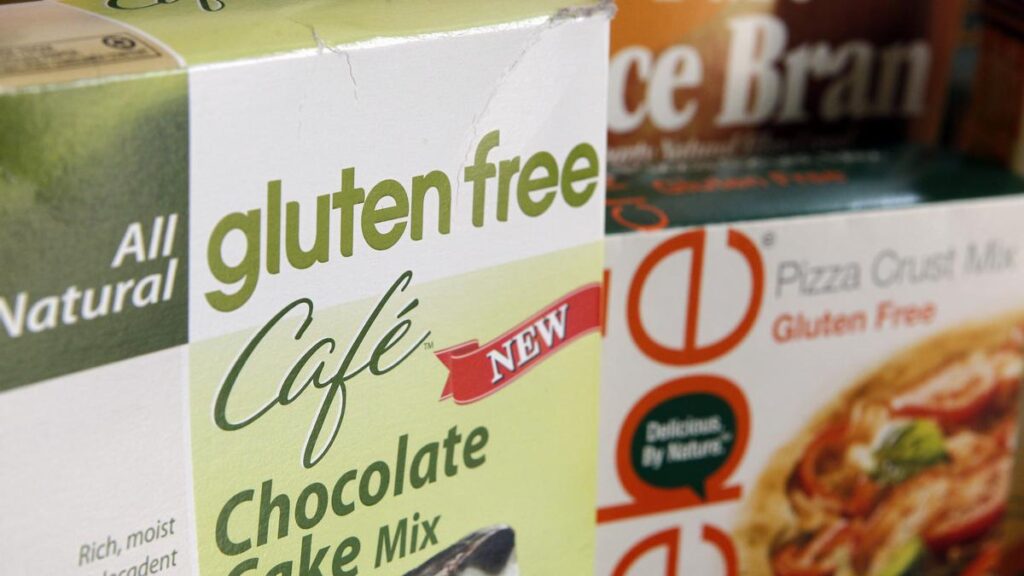
There is no cure for gluten intolerance. But most people find relief from symptoms by following a gluten-free diet. Photograph used for representational purposes only.
| Photo Credit: AP
Gluten-related disorders is a broad term used to cover celiac disease, non-celiac gluten sensitivity, and wheat allergy. Celiac disease is the most severe form of the disorder, and is an autoimmune condition where the immune system attacks the small intestine when gluten is consumed. This, in turn, hinders nutrient absorption, leading to symptoms including digestive issues, skin rashes etc. Non-Celiac disease on the other hand, isn’t fully understood, but these affectedexperience digestive and other symptoms after consuming gluten. Wheat allergy is an adverse reaction to the proteins in wheat, and symptoms can range from mild to severe, including hives, swelling, difficulty in breathing, and potentially, anaphylaxis.
What is gluten?
Gluten is a protein found in wheat, barley, rye and other grains. It is in a lot of common foods and drinks, including pasta, cereal and beer. Gluten can also be in things like vitamins, cosmetics and even certain medications. According to the Celiac Disease Foundation, gluten helps foods maintain their shape, acting as a glue that holds food together.

Who can have gluten-related disorders?
Anyone can have gluten intolerance, though it’s more common in women. Some people are born with gluten intolerance; others develop it later in life.
There is no cure for gluten intolerance. But most people find relief from symptoms by following a gluten-free diet. The use of probiotics and some certain enzymes is said to increase good bacteria in the gut, which may help to reduce symptoms of bloating, gas or constipation.
The most cost-effective and healthy way to follow a gluten-free diet is to include fruits, vegetables, meats/poultry, fish/seafood, dairy, beans, legumes and nuts in the diet.
What is the extent of the problem in India?
Statistics peg the prevalence of Celiac disease at 1% at a global level. Additionally, the prevalence of wheat-related disease is about 6% and more than 90% of cases remain undiagnosed. In India, about 6 to 8 million Indians are estimated to have this disease, and its prevalence in the North Indian community is higher.
A multicenter pan-India study including 23,331 healthy adults titled: ‘Emergence of Celiac disease and Gluten-related disorders in Asia,’ by the Department of Gastroenterology and Human Nutrition, All India Institute of Medical Sciences, noted that the seroprevalence of Celiac disease (CeD) was 1.23% in Northern India, 0.87% in North-eastern India, and 0.10% in Southern India.
“This study demonstrated regional differences in the prevalence of CeD, which was likely because of the difference in the wheat (gluten) eating pattern, being highest in the Northern part of India and lowest in the South. Genetic differences like population prevalence of predisposing genes for CeD such as human leukocyte antigen (HLA)-DQ2 and/or HLA-DQ8 are unlikely to explain such a significant difference,’’ it added.
Risk factors for Celiac Disease
The same study notes that the pathogenesis of CeD involves a complex interplay of environmental and genetic factors. Based on the prevalence of high-risk categories in these factors, hotspots of the world for CeD can be identified.
The two most populous countries of the world, India, and China, also grow the maximum amount of wheat grains. Indians consume an average of 48.0 kg/person/year. Furthermore, increasing Western influences in diets and the use of commercial gluten-based foods like breads, noodles, and pasta is leading to an increase in gluten intake in many Asian countries. The ingestion of gluten is further accentuated by urbanisation of small towns, migration to busy metropolitan cities, and the culture of fast food and restaurant dining. An increase in gluten ingestion is likely to increase chances of development of CeD in genetically susceptible populations, states the study.
What is the Union Health Ministry doing to treat gluten allergies in India?
The Health Ministry’s Food Safety and Standards Authority of India (FSSAI), focuses on treating gluten allergies by ensuring proper labelling of gluten-free products and promoting awareness about wheat-related disorders. It is also encouraging the development of symbols or logos for gluten-free products, especially considering the diverse linguistic landscape in India.
Published – April 16, 2025 05:21 pm IST

